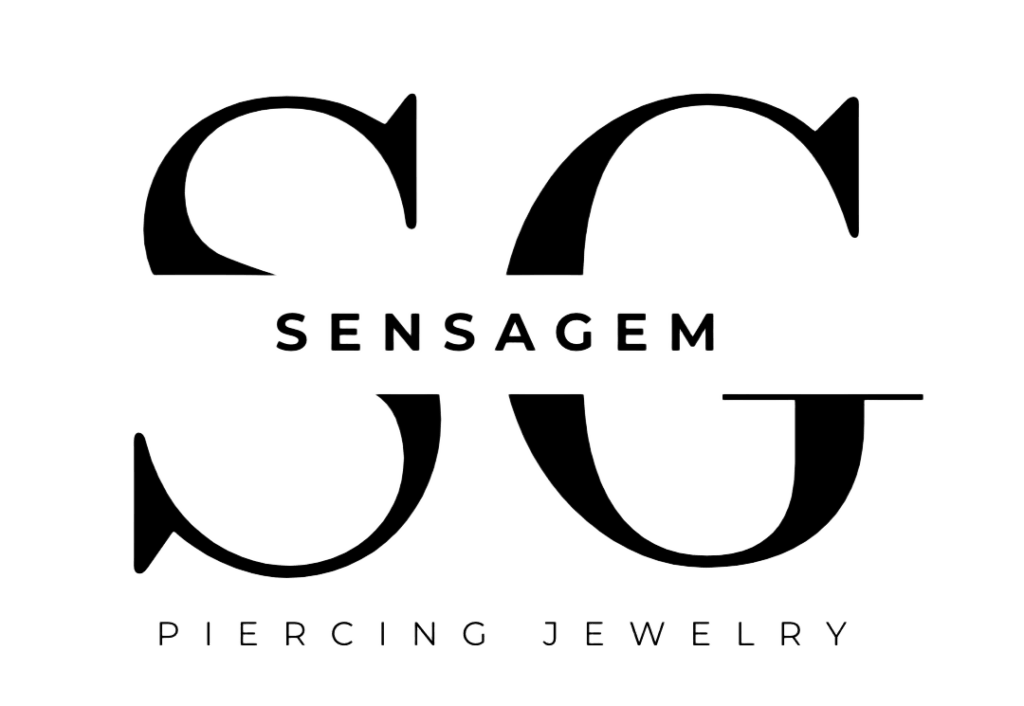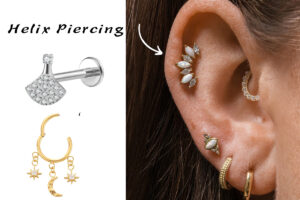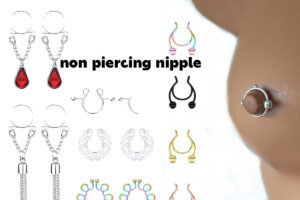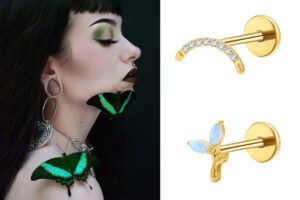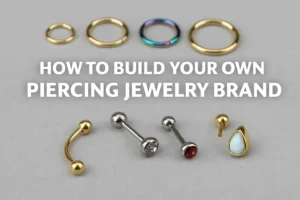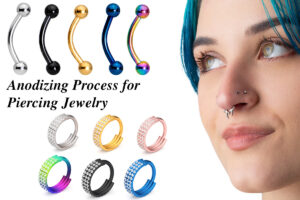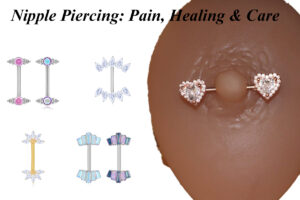Introduktion:
When selecting body jewelry for your piercing studio or retail business, one of the most important choices is the material: titanium or Surgical steel? While both offer durability and style, the ideal option can vary depending on the piercing location, healing stage, skin sensitivity, and client preferences. In this article, we break down which material suits each piercing type—and why.
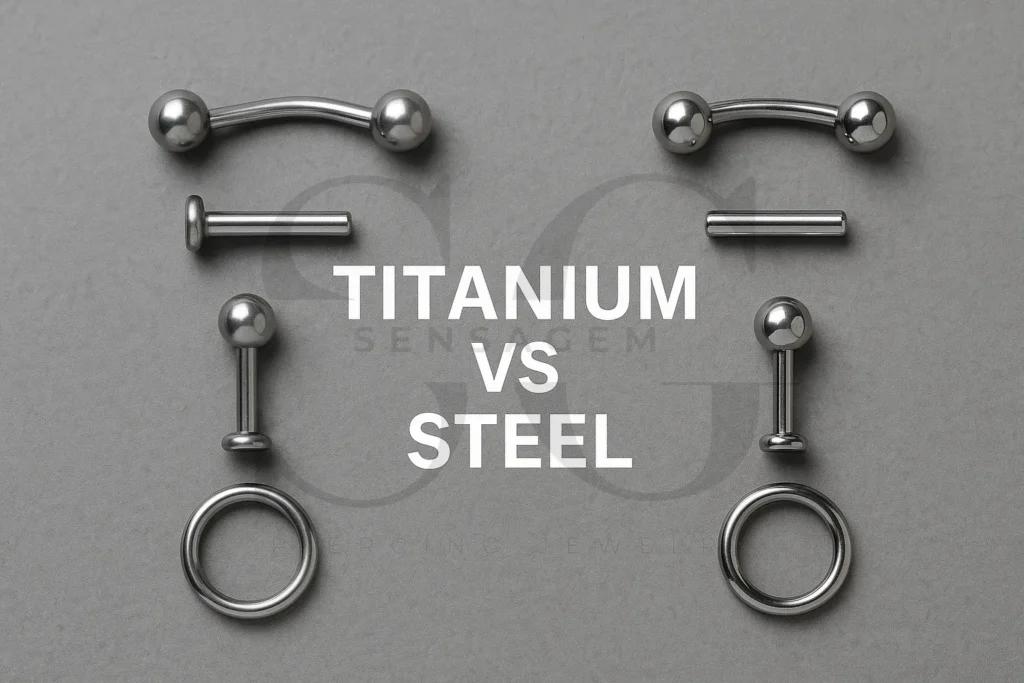
1. What’s the Real Difference Between Titanium and Stainless Steel?
| Feature | Titan (ASTM F136) | Kirurgstål (316L/316LVM) |
|---|---|---|
| Nickelinnehåll | ~0% (Nickel-free) | Contains nickel (can cause allergies) |
| Biokompatibilitet | Excellent – implant-grade | Bra, but not for all skin types |
| Vikt | Ultra-light | Tyngre |
| Finish Options | Anodized colors, PVD | PVD, electroplated, polish |
| Bäst för | New piercings, känsliga kunder | Läkt piercingar, style variety |
👉 Relaterad: F136 Titanium vs. 316L rostfritt stål - bäst för piercing smycken
2. Facial Piercings (Näsa, Septum, Ögonbryn)
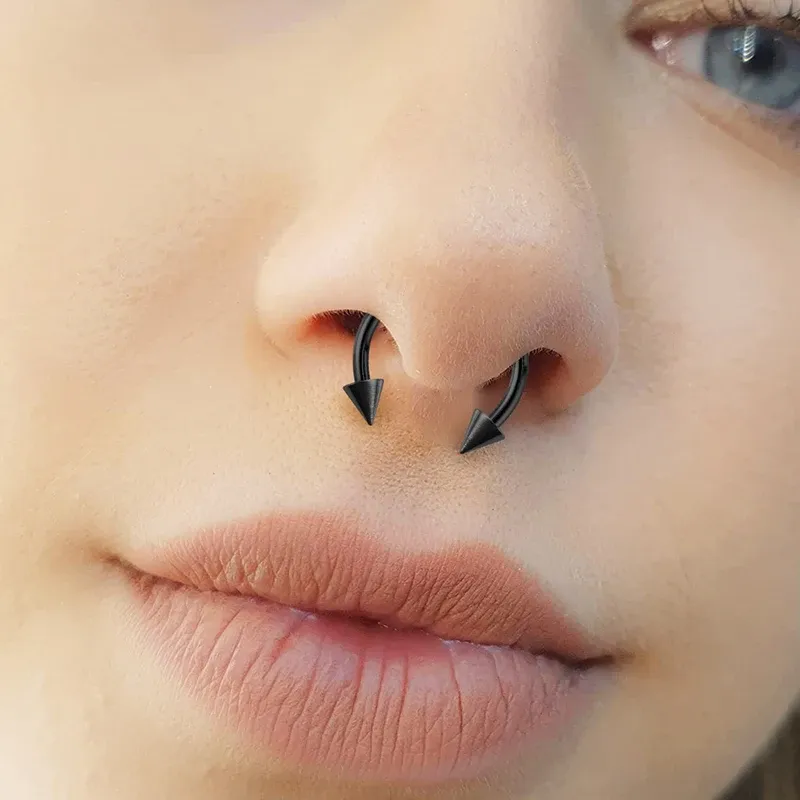
Recommended: Titan
Titanium’s lightweight and hypoallergenic properties make it ideal for nose and eyebrow piercings.Anodized titanium adds style without coatings or plating.Steel may be used once fully healed, but nickel sensitivity is a concern.
3. Ear Piercings (Lob, Brosk, Helix, Tragus, Industriell)
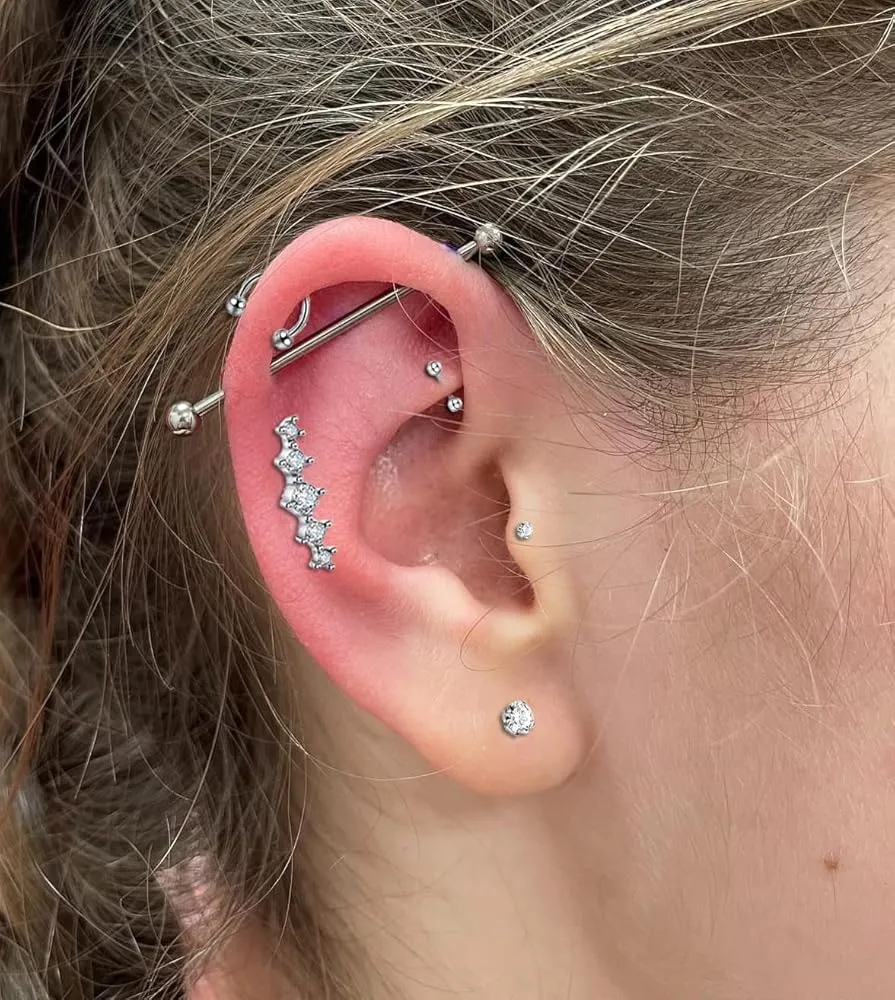
Recommended: Titan
Titanium is best for initial cartilage piercings due to lower risk of keloids and irritation. Surgical Steel is acceptable for healed lobe piercings and industrial bars where strength matters.
4. Muntlig piercing (Tunga, Smiley, Läpp, Labret)
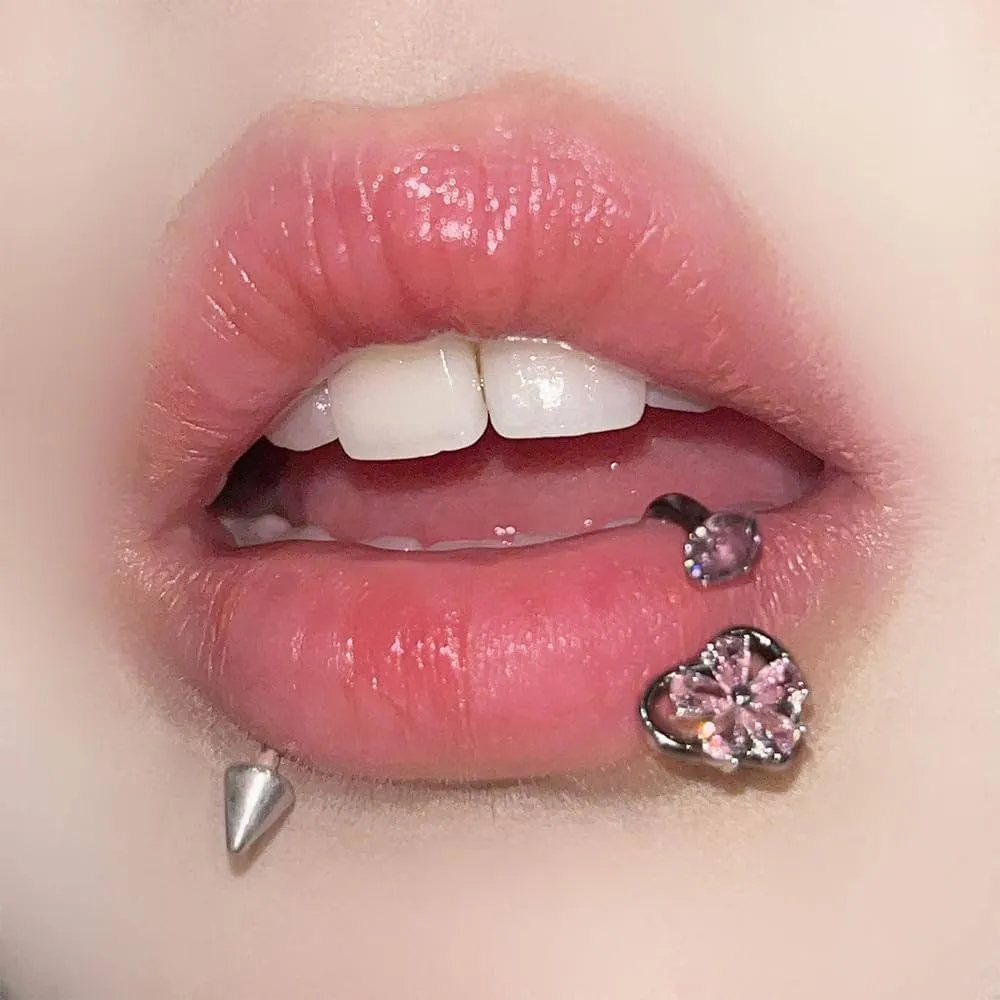
Recommended: Titan
Titanium is strongly recommended for tongue or lip piercings:Prevents allergic reactions in moist environments.Smooth surface minimizes tissue trauma.Surgical Steel is acceptable for labret studs after full healing.
5. Body Piercings (Navel, Nippel, Yta)
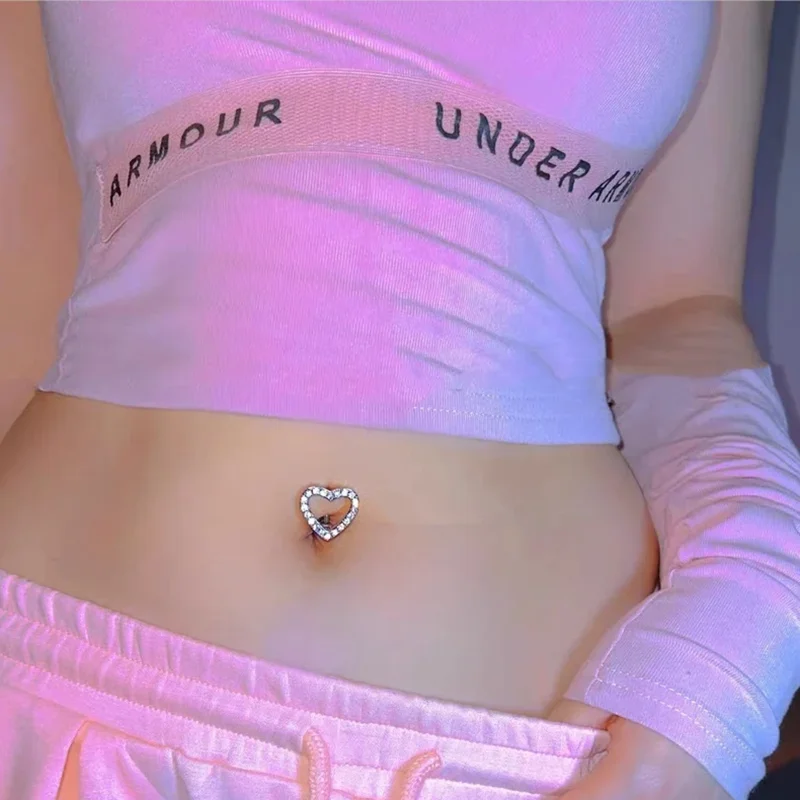
Recommended: Titan
Navel / Surface Piercing:Go with Titanium to minimize migration and inflammation during healing.Bröstvårtor:Titanium is best for new piercings; stainless steel is fine for healed ones but may feel heavier.
👉 Relaterad: How to Heal and Care for Your Navel Piercing
6. Genital Piercings
Always use Titanium for initial jewelry.
These areas have thin, delicate tissue and high sensitivity.
Titanium reduces risk of irritation, infektion, or allergic reaction.
Some clients later prefer steel for its weight and visual impact.
👉 Relaterad: Förstå Fourchette Piercings: Vad du behöver veta
7. Jewelry Upgrades & Färganpassning
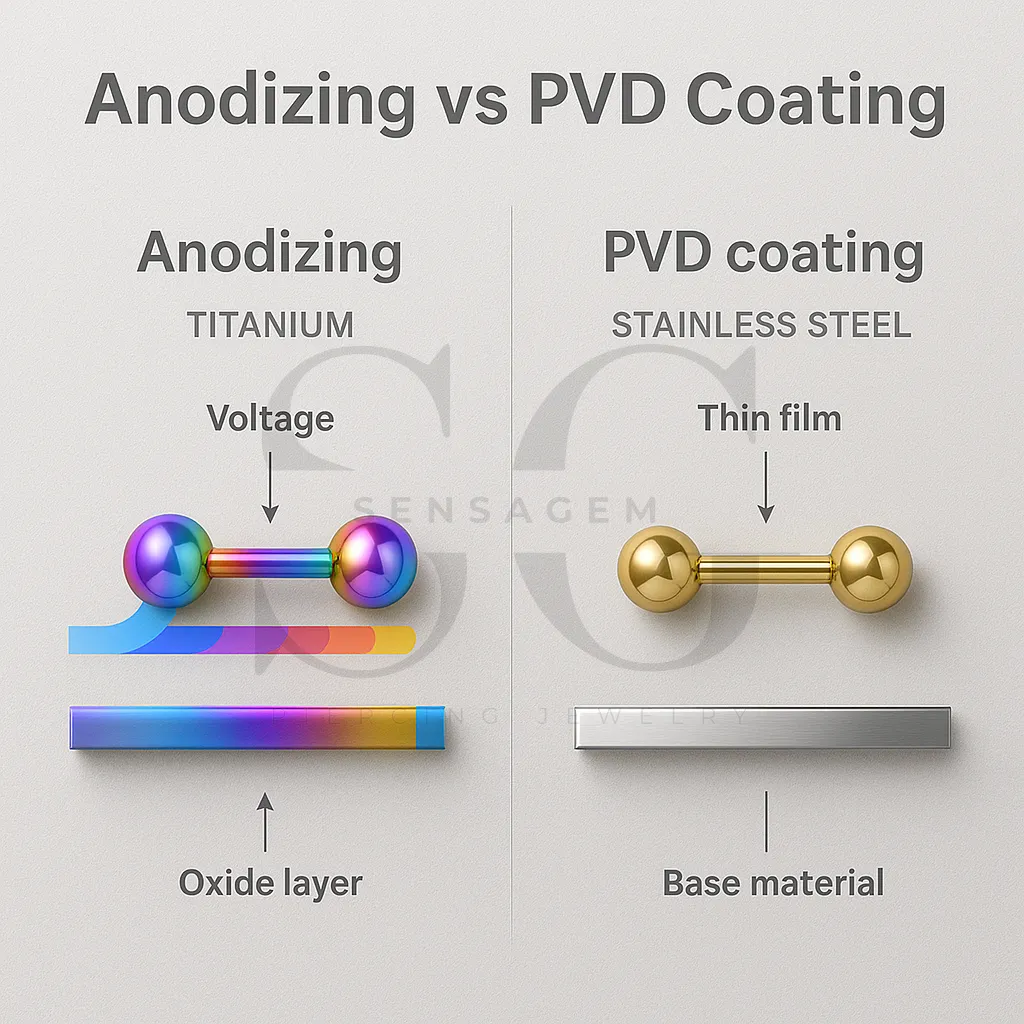
Titan allows for Anodiserande, enabling custom colors without coatings.
Stål jewelry can be plated (TILL EXEMPEL., guld, svart), but may wear over time.
👉 Relaterad: Förstå anodiseringsprocess för piercing smycken
Vanliga frågor
Is titanium always safer than stainless steel?
Titanium is hypoallergenic and nickel-free, making it the safest choice for new or sensitive piercings. Stainless steel may contain trace nickel and is better for healed areas.
Can I use titanium for all body parts?
Yes—especially recommended for sensitive zones like nipples, genitals, or oral piercings. It’s also ideal for anodizing and color customization.
What’s the most cost-effective option for Piercing studio clients?
For high-volume healed piercings like lobes or industrial bars, 316L steel is more affordable. For first-time wearers, always choose titanium.
How can I verify the jewelry is real titanium?
Ask your supplier for ASTM F136/F1295 certification or Mill Test Certificates (MTC). Avoid vague labels without documentation.
Slutsats
Choosing between titanium and stainless steel isn’t about which is better overall—but which is better for each piercing. For fresh piercings or sensitive clients, titanium is your go-to. For healed piercings or bold looks, steel can work well. By offering both, you can meet a wider range of customer needs while protecting their safety and satisfaction.
📦 Looking to stock safe, stylish titanium and Surgical steel jewelry for your studio or shop?
Explore over 500 SKUs of certified body jewelry made from implant-grade titanium and surgical steel.
